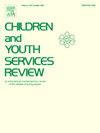Examining of participation, support and barrier of children with and without maltreatment: A cross-sectional study with caregiver perspective
IF 2.4
2区 社会学
Q1 FAMILY STUDIES
引用次数: 0
Abstract
Objective
Child maltreatment can harm children physically, mentally, and emotionally. It can affect children’s activities of daily living and social participation. This study aimed to compare the levels of participation, support and barriers for children who have been maltreated with children who have not been maltreated.
Participants and setting
The study included 70 maltreated (28 male, 42 female) and 52 non-maltreated (29 male, 23 female) caregiver of children aged 6–12 years.
Methods
A cross-sectional, direct survey method was used to collect data from caregiver of children. Participation, frequency of participation, support and barriers were assessed using the Participation and Environment Measure for Children and Youth (PEM-CY).
Results
Statistically significant differences were found between children who were maltreated in the home context and children who were not maltreated in terms of participation frequency, participation level and environmental barriers scores (p < 0.05). In addition, statistically significant differences were observed between children who were maltreated in the school and community context and children who were not maltreated in terms of environmental barriers, frequency of participation and level of participation scores (p < 0.05).
Conclusions
The results of our study showed that the participation of children with a history of child maltreatment in home, school and community settings was significantly affected compared to the control group. In particular, it was observed that children with a history of child maltreatment needed more support in participating in activities in both home and school environments compared to their peers with normal development.
检查参与,支持和障碍的儿童有和没有虐待:横断面研究与照顾者的观点
虐待儿童会对儿童造成身体、精神和情感上的伤害。它会影响儿童的日常生活活动和社会参与。本研究旨在比较受虐待儿童与未受虐待儿童在参与、支持和障碍方面的水平。该研究包括70名受虐待儿童(28名男性,42名女性)和52名未受虐待儿童(29名男性,23名女性)6-12岁的照顾者。方法采用横断面、直接调查的方法,对儿童照顾者进行问卷调查。使用儿童和青年参与和环境测量(PEM-CY)来评估参与、参与频率、支持和障碍。结果家庭虐待儿童与非家庭虐待儿童在参与频率、参与水平和环境障碍得分方面差异有统计学意义(p <;0.05)。此外,在学校和社区环境中遭受虐待的儿童与未遭受虐待的儿童在环境障碍、参与频率和参与得分水平方面存在统计学显著差异(p <;0.05)。结论与对照组相比,有儿童虐待史的儿童在家庭、学校和社区的参与受到显著影响。特别值得注意的是,与正常发育的同龄人相比,有虐待儿童历史的儿童在参与家庭和学校环境中的活动时需要更多的支持。
本文章由计算机程序翻译,如有差异,请以英文原文为准。
求助全文
约1分钟内获得全文
求助全文
来源期刊

Children and Youth Services Review
Multiple-
CiteScore
6.30
自引率
6.10%
发文量
303
期刊介绍:
Children and Youth Services Review is an interdisciplinary forum for critical scholarship regarding service programs for children and youth. The journal will publish full-length articles, current research and policy notes, and book reviews.
 求助内容:
求助内容: 应助结果提醒方式:
应助结果提醒方式:


